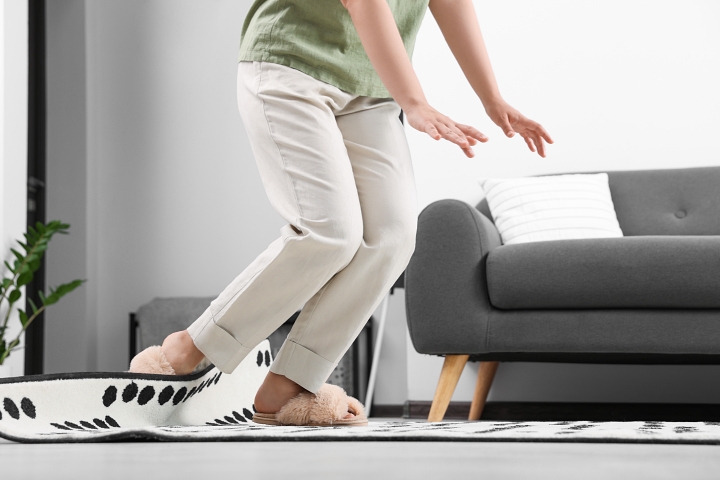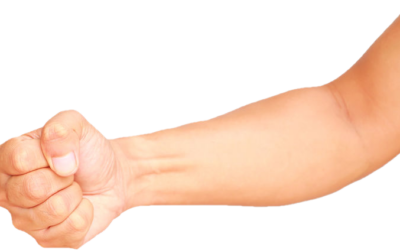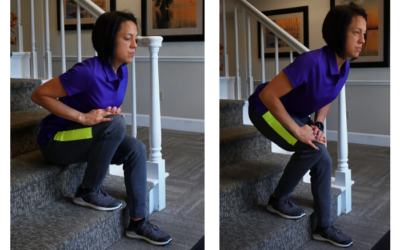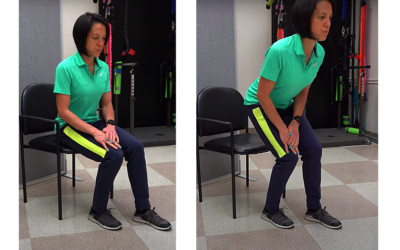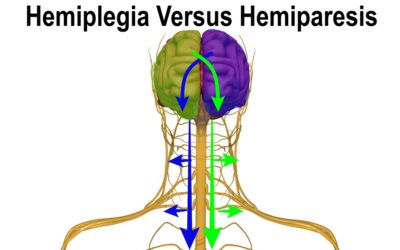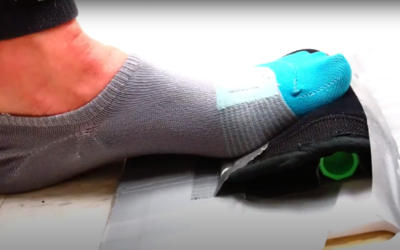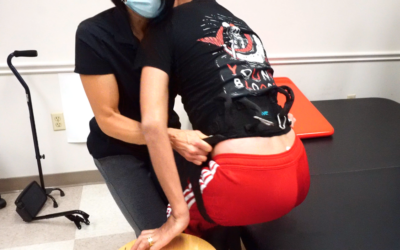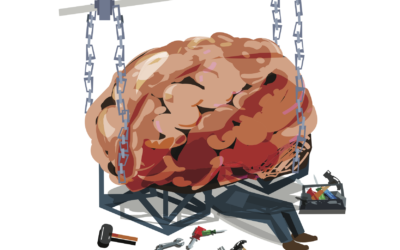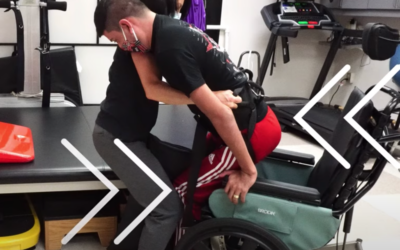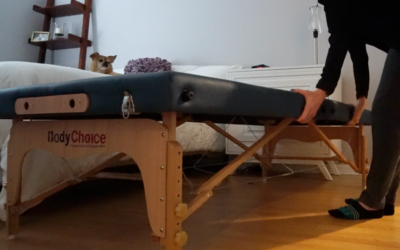Recovering from Stroke? Don’t Let These 7 Walking Mistakes Set You Back
Better Walking Starts by Avoiding These Mistakes
Recovering your walking ability after a stroke is an incredible accomplishment. You’ve put in the work. Strengthening exercises, therapy sessions, and daily practice. But what if your progress feels slower than expected? Or certain strategies just don’t feel quite right?
The truth is, some of the most common walking tips used in stroke rehab can unintentionally make things harder in the long run. Based on my professional experience working with stroke survivors, here are 7 mistakes that could be holding you back.
Mistake #1: Using a One-Handed Device on Your Strong Side
Example: A hemi-walker placed on your stronger arm right after a stroke.
It may seem logical to add stability to your strong side, but this often backfires, especially early in rehab. Devices like hemi-walkers have wide bases and offer so much support that they reinforce leaning and over-reliance on your strong side. This makes it harder to relearn balanced walking, and the habit is tough to unlearn.
What to try instead:
- Two caregivers for hand-held assistance, this encourages symmetry.
- A two-handed walker, possibly with your unaffected hand gently strapped to guide use of both sides.
- If compensations are already present, try placing the device in front of you and avoid keeping it off to the side.
- In the later stages of recovery, consider switching to a walking stick or trekking pole. These give support without encouraging one-sided leaning.
Mistake #2: Assuming Any AFO (Ankle-Foot Orthosis) Will Work
AFOs are often issued early in rehab, but not all are created equal. If your walking form or speed is off, the wrong AFO can make things worse, like stiffening your leg or limiting natural movement.
Real example: One client’s speed training hit a wall because her non-articulated AFO didn’t allow enough ankle flexibility. Once adjusted, her walking improved significantly.
What to try instead:
- Work closely with a physical therapist and orthotist to find an AFO tailored to your goals.
- If it’s not working, let them know. The best providers will try other solutions.
Mistake #3: Throwing Away Your AFO (Ankle Foot Orthosis) Too Soon
Sometimes a therapist says you “don’t need your AFO anymore.” While that may feel like progress, ditching it completely can lead to setbacks.
Here’s why: Spasticity never disappears fully. It’s always there in the background, and when compensations sneak back in, stiffness often follows.
What to try instead:
- Wean off your AFO gradually.
- Use it when walking in public or on long outings, but practice walking without it safely at home.
- Keep the AFO on hand. If spasticity returns, wear it for a week or two to reset.
Mistake #4: Focusing Too Much on Walking Quality Instead of Speed
This might sound counterintuitive, but speed and distance often matter more than form.
What to try instead:
- Prioritize speed and distance if you spend a lot of time in a wheelchair
- Work on a “normalized” walking form only if you’ve had no recent falls, and especially if it’s been years since your stroke.
Mistake #5: Focusing on “Heel-Toe” Cues
“Walk heel-toe” is common advice, but it might not be helping you.
Here’s the issue: Telling someone with spasticity to push off with their toe can actually increase toe pointing, delay foot clearance, and make foot drop worse.
What to try instead:
- Use the cue: “Heel, heel.” Eliminate “toe” from your vocabulary altogether.
- This gives your foot more time to clear the ground and helps prevent tripping.
Mistake #6: Only Strengthening Glutes
Many stroke survivors are told to “strengthen your glutes,” but stroke recovery is about retraining movement patterns, not just building muscle.
Why that matters: A stroke affects the brain’s ability to control movement, not the muscle’s ability to activate. For example, you might be able to squeeze your glute, but still struggle to stand on that leg without your hip dropping.
What to try instead:
- Focus on functional exercises like single-leg standing. Aim to hold your hip steady without dropping.
- Think movement, not just strength.
Mistake #7: “Don’t Look Down”
You’ve probably heard this one before, but it’s misleading. Looking down is normal and necessary for safe walking.
What’s actually dangerous is bending your head and shoulders forward to look at your feet.
What to try instead:
- Glance down with your eyes, not your head.
- Keep your neck upright and shoulders back.
- Look 6–10 feet ahead, but check the ground as needed, especially if you can’t fully feel your feet.
Final Thoughts
Stroke rehab is challenging, and there’s no one-size-fits-all solution. The key is understanding why something is being recommended, and making sure it truly supports your long-term goals.
If any of these tips resonated with you, try out the alternatives and see how they feel. Improving your walking isn’t just about strength or form. It’s about confidence, safety, and freedom.
Blessings in disguise
Life isn’t always easy. I am probably not telling you anything you don’t already know. No one is exempt from challenges in life. Some go through more challenges than others. I have learned to be content with NOT (always) figuring out why. But I know that is not...
What Causes a Clenched Hand After a Stroke
A stroke can cause a wide range of problems in the arm. One of the major causes of disability after a stroke is a clenched hand. The most common cause for a clenched fist is spasticity. If left “unmanaged”, spasticity creates muscle shortening which will result in...
Regain Normal Walking After a Stroke: Advanced
A common goal after a stroke or a brain injury is to regain "normal walking". However, this goal is not limited to just those who have suffered a stroke. I dare say it is the number one goal of almost everyone who has suffered an injury to their neurologic system. ...
Stand and Walk After a Stroke: Intermediate Progression
Many want to stand and walk after a stroke. Of course, this is critical in giving someone more independence. However, standing and walking is also important to prevent deconditioning, maintain joint health, and prevent postural abnormalities associated with prolonged...
Hemiplegia Versus Hemiparesis
Hemiplegia versus Hemiparesis After a Stroke Hemiplegia and hemiparesis are two terms that get thrown around a ton when talking about stroke. They are often times used interchangeably however, they have two different meanings. With that being said, I wanted to clear...
How to fix curled toes
Curled toes is a common complaint after a stroke. This usually does not appear until several months after a stroke has occurred. People who are experiencing toe curling usually have pain when standing on the involved leg. In many cases, this is associated with...
Product Spotlight: Best Gait Belt to Improve Standing
A gait belt can be a critical tool to help a loved one relearn the correct way to stand. With the right gait belt, you can also help someone walk in the early stages of neurologic rehab. And that is why gait belts made its way to our latest "product spotlight"....
Rewire your brain after a stroke
A stroke causes damage to the brain. This results in the inability to use the arm and leg on the opposite side of the body. Neuroplasticity is the brain's ability to rewire after an area of the brain has been damaged. This brain rewiring is the foundation for how...
Caregiver Training: Helping someone stand
Standing is one of the most critical skills to relearn after any type of neurologic injury. Standing helps with digestion, bone health, and joint health. It can also reduce spasticity, and facilitate motor recovery. The caregiver role is almost more important than...
Stroke Home Exercise Equipment Guide
The home exercises are probably the most important part of a rehabilitation program. That being said, you "traditional exercise equipment" might not be the most appropriate for the exercises that will help to restore normal movement patterns. I have set up many of...

